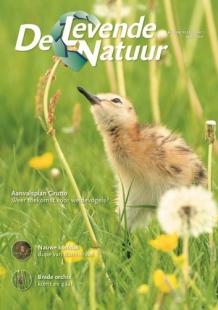De Levende Natuur nummer 1 van 2021 (English summary)
Afbeelding

Nature management for the narrow-mouthed whorl snail
Arno Boesveld, Sylvia van Leeuwen, Tello Neckheim & Adriaan Gmelig Meyling
Unless the narrow-mouthed whorl snail (Vertigo angustior) is included in Annex II of the Habitat Directive, the numbers and distribution of this species in the Netherlands decreased strongly between 2004 and 2017 and this decrease is still going on. An important cause of this decrease are large scale measures to recover the Nature 2000 habitat type ‘gray dunes’, like removing the topsoil, grazing by cattle, mowing, and chopping shrubs. Also, the removal of poplars in the dunes contributed to the negative effect. After these measures the resulting habitat is less or no longer suitable for the narrow-mouthed whorl snail. Systematic monitoring results show that the decrease was much stronger in areas grazed by cattle (-85 %) and with other active nature management (-70 %) than in areas without active nature management (-20 %). The authors plead for immediate measures to turn the tide. They recommend the following measures: 1. Designate specific zones within each Natura 2000 area where the habitat for snails is kept in good condition via small scale management without grazing, chopping, mowing, or removing the topsoil. 2. When limiting shrub growth outside these zones is needed, guidance is given to do it in a way that is less harmful to the remaining populations of the narrow-mouthed whorl snail. Nature management plans should not only focus on vegetation but also on soil fauna. If a negative effect on the remaining population is unavoidable, compensate the effect in another part of the designated Nature 2000 area. Recently good results were realised with the translocation of snails to an area where the habitat was optimised for this species in advance.
National analysis into the contribution of restoration measures to improving biodiversity in the Nature Network
Dirk-Jan van der Hoek, Bart de Knegt & Paul Giesen
In 2020, PBL Netherlands Environmental Assessment Agency analyzed the Nature Pact. In addition to a national analysis of how many provinces have taken what restoration measures in the Nature Network Netherlands, it also analyzed whether the measures contribute to achieving the ambition of ‘improving biodiversity’. The analysis shows that the restoration measures funded by the provinces to improve biodiversity in the Nature Network have a significantly positive impact, particularly in wet ecosystems. The impact is less significant in dry ecosystems, probably because it is still too small and too dispersed. Compliance with the agreements under the Nature Pact calls for expansion and concentration of restoration measures.
Duration and start of impoverishment determine dynamics of broad-leaved marsh orchid
Jan Bakker, Yzaak de Vries, Heinz Düttmann, Eeuwe Dijk & Henk Everts
In an agricultural fen meadow system, haymaking with cessation of fertilizer application was practiced to restore the target Juncus acutiflorus community, including the iconic orchid Dactylorhiza majalis. Comparing various fields with different periods (70-35 years) since the cessation of fertilizer application allowed to use the series of fields as a chronosequence. The abundancy of orchids is higher in fields with long-term cessation of fertilizer application than in fields with a shorter period. Similar periods of cessation of fertilizer application do not imply similar abundancies of orchids. The abundancy is lower in fields in which cessation of fertilizer application started more recently. This phenomenon may be attributed to a legacy of a longer period of fertilizer application and is more visible in fields with relatively much seepage than in fields with little seepage. Orchid individuals established, increased, and decreased again during the past 45 years. The decline of orchids, despite increasing duration of management, may be related to recently increasing atmospheric nitrogen deposition. This might affect the symbiosis between orchid protocorms and endomycorrhizal fungi, hence preventing the establishment of juvenile orchids.

